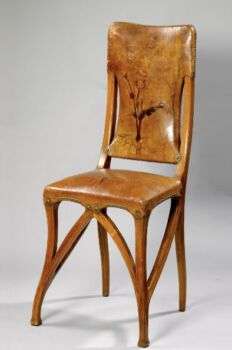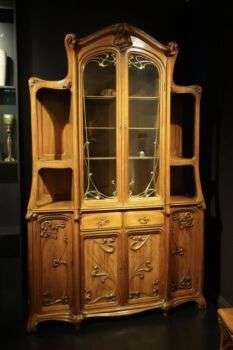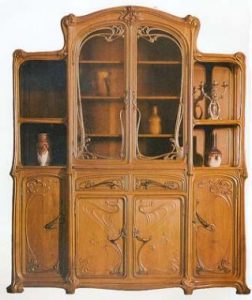French industrial designer Eugène Gaillard abandoned a career as a lawyer to dedicate his efforts to interior design and decoration. After which, he became a leading figure in the Art Nouveau style.

About His Life
Eugene Gaillard showed an interest in sculpture and distinguished himself as a craftsman and furniture designer. He was one of the leading Art Nouveau artists of his time, thanks to his connections with Siegfried Bing, who sold his interior designs, furniture, and textiles at his “Maison de l’Art Nouveau” gallery.

Image source: https://www.ragoarts.com/auctions/2020/01/early-20th-century/488?search=eugene-gaillard
In 1900, Bing presented Gaillard, among other leading designers, in his Art Nouveau Pavilion at the Paris Universal Exhibition. All objects, furniture, and textiles displayed at this exhibition were designed by three artists: Edward Colonna, Georges de Fer, and Eugene Gaillard. Until 1914, he continued to design Art Nouveau furniture.

Image source: http://robertzehilgallery.com/galerie/art-nouveau/antiques-eugene-gaillard-furniture-1900/
About His Work
The Side Chair, introduced at the 1900 World’s Fair in Paris, is part of a dining room at the “L’Art Nouveau Bing” Pavilion. The exhibition gave Gaillard his first opportunity to showcase his work to the masses, and overnight he became the foremost follower of the modern movement. Additionally, the chair has flowing lines and an embossed whip pattern on the back in amber leather embodies Art Nouveau style. Often, the chair is walnut, the back upholstered in embossed leather, partly stained, and fixed with brass nails. Further, the four legs are cut in shallow S-bends and have a cross-sectional shape.

About His Style
His pieces were exquisite. While its shapes and motifs gain inspiration from floral motifs, they did not reflect nature. His textile designs are typical of most French designs of the period, where the emphasis is on specular repeats and muted tonal aspects of color schemes. Visually, they are very different from the British textile design characteristic of this period. In addition, he viewed his fabrics as part of the environment usually created by Siegfried Bing.

Image source: http://www.artnet.com
Info sources:
